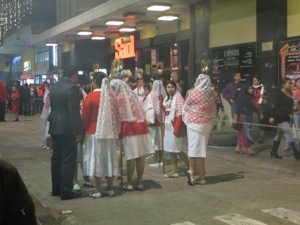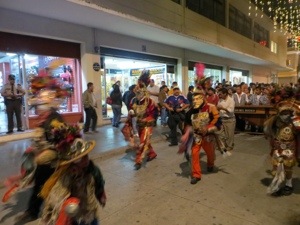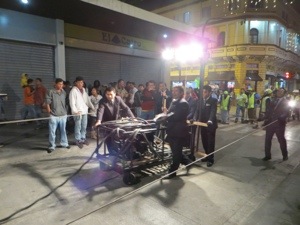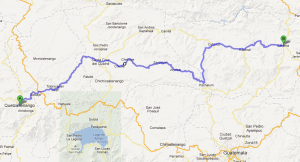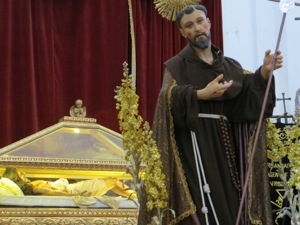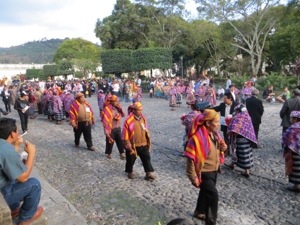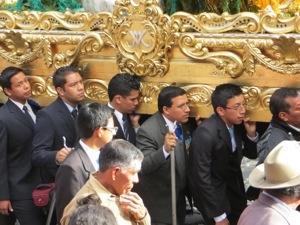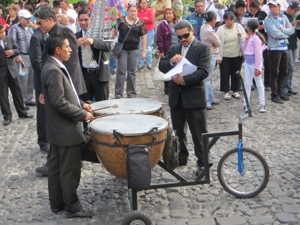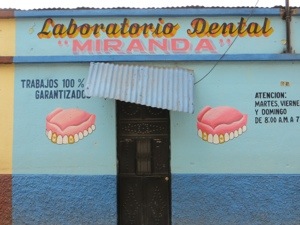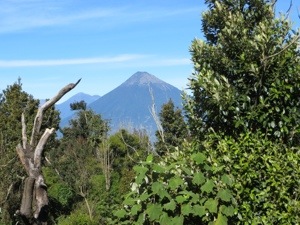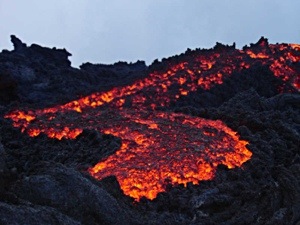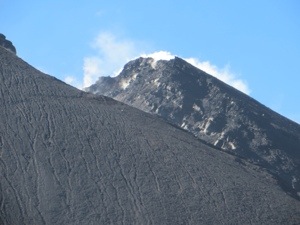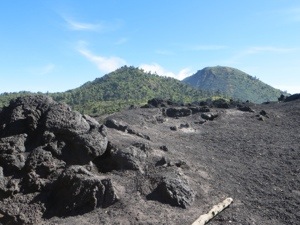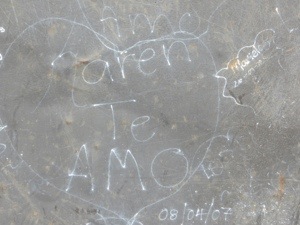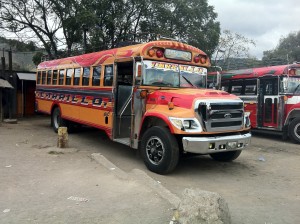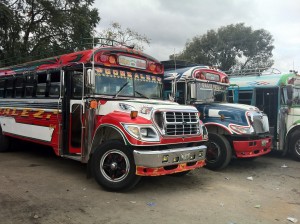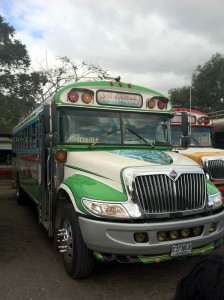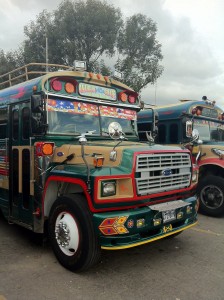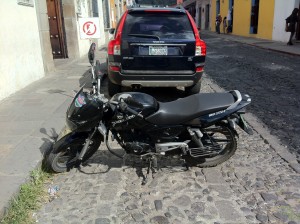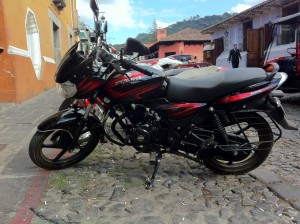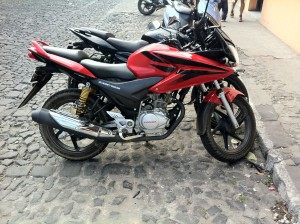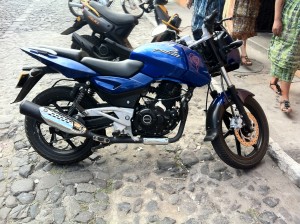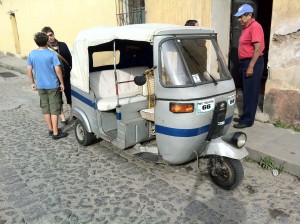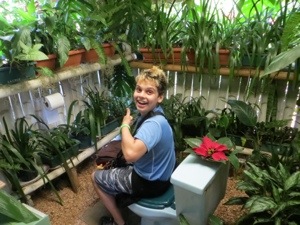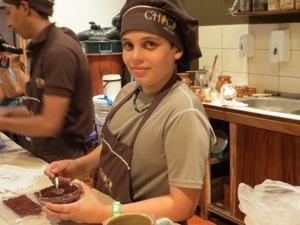We seem to have gotten a little out of synch here. My description of Joe’s Mud Bath concerned events that actually preceded by a good week those described in Elizabeth’s comments on Christmas in Ciudád Guatemala. So in the interest of re-synching the divergent timelines, I’m going to do a quick recap.
After the mud-fest, we drove to Cobán for a couple days. We stayed one night in an old hostel that has been over the years converted in a rather upscale and very nice restaurant. Only three hostel rooms remain, and visitors share bathroom facilities with each other, the staff and the customers of the restaurant. The food was excellent, the ambiance of the restaurant delightful, the accommodations a little less so.
Next day, we moved to another hotel, housed in what we understand to be the oldest building in Cobán. Charming and very relaxing. While we were there, a local mechanic looked at Rocinante, as it needed some attention beyond my abilities. He said he could do the work, but it would take at least three days to get the parts from Guatemala City. So instead, we decided to head back to the capital before leaving the country.
But first, we had to visit Semuc Champey, the reason for our presence in Cobán in the first place. This is a natural wonderland, described here far better than I can manage. The closest Rocinante could bring us to it was Lanquín, about twelve kilometers away. We stayed at a nice, very clean little place in the middle of town, and early the next morning grabbed a bus to the pools, caves, bridge and whatnot. I’ll leave it to others (you know who you are) to describe the visit to the caves. I was not interested this time. But the pools, even I could appreciate. Joe reverted to his amphibious self, and had a great time with the bikini-clad world-travelers.
A day or two later, we were back on the road, heading into Guatemala City for repairs. The sister of one of Elizabeth’s friends has family there, and we had some names and phone numbers. Turned out to be exactly what we needed. A little while after Elizabeth made the introductory call, we got a call back from Juanito, Stephanie’s sister’s ex-brother-in-law. We arranged to meet at the hotel in the morning. And bright and early (for us), he and I went out in search of auto service.
Juan was amazing. He knows the city very well (a major accomplishment in itself, as far as I’m concerned), and can talk to anybody and everybody. We drove around town, Juan on his motorcycle, me following as best I could in Rocinante, and eventually found the right place to replace the A/C compressor (not really needed in the mountains of Guatemala, but essential as we proceed lower and more southerly). We left the van overnight, and Juan gave me a ride back to our hotel. My first time on a bike in about twenty years.
Two days later, after the work had been done—on time and for exactly the estimated price—we went out again, this time in search of a replacement rear window and tailgate supports. The former quest was successful, the latter not. But the van is now in very good shape, and we’re looking for a sturdy stick to prop the tailgate open.
Thanks, Juanito, we could not have done it without you. If anybody is traveling to Cíudad Guatemala, and needs someone to help deal with the city, let me know and I’ll give you his particulars.
We left Guatemala two days before Christmas, drove to Copán Ruinas, Honduras, where I type these words. This is a lovely town, walking distance from some of the most spectacular Mayan ruins we’ve seen, and so far the only place where we’ve been content to park the van on the street overnight, rather in a locked parqueo. We’ve seen some amazing things in the past few days, and now that the timeline is back in synch, I’ll leave it to others to describe them.







